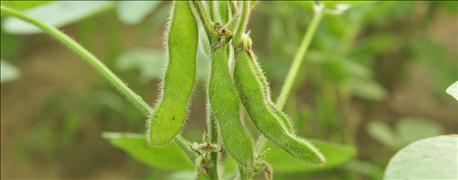October 31, 2016

Regulatory issues and export approval delays have put soybean trait advancement on hold over the past few years. With the recent approval and movement of several new trait options, farmers should begin thinking about which system will work best for their farm’s specific challenges.
Roundup Ready soybeans have been available since the late 1990s. This herbicide trait may be the best we will ever see for total weed control. But after years of heavy use, this system’s effectiveness has diminished due to the rapid development of Roundup-resistant weeds.
As a new weapon in weed management, LibertyLink soybeans were introduced in 2006, and adoption has taken off. While no Liberty herbicide-resistant weeds are confirmed today, farmers should be hesitant to believe there will not be one in the future.

NEW TRAITS: New herbicide systems are coming to the market to help you keep your corn and soybean fields weed-free.
Roundup Ready 2 Xtend (RR2X) is the latest available trait. Export approvals have been met, and the over-the-top application of certain dicamba herbicides is expected before spring planting begins. The RR2X system will work for our region’s farmers. But it cannot be expected to be the silver bullet that Roundup Ready soybeans were when they were launched. While RR2X will control the tougher and resistant weeds we deal with today, how many years we can rely on it will depend on what weeds develop resistance and how quickly they adapt.
Beyond weed resistance, these new traits deliver outstanding new genetics. Breeding for the new varieties began over five years ago, which means the genetics we have today are the result of five years of breeding. There has been very little forward breeding of RR2Y or LibertyLink during that time. So, while we have good, competitive varieties available today in those traits, the focus of the newest genetics has been on RR2X, Enlist and Balance GT/LL.
So how should you best manage the available traits? My advice is to first select the best genetics that fit your farm. A clean field with poor genetics will still cost you money. If you normally use glyphosate in your corn, take a look at the LibertyLink system to change up your modes of action as you rotate to soybeans. Also, with good herbicides available, consider planting conventional corn to reduce exposure to glyphosate in your crop rotation cycle.
Preemerge herbicides are essential in front of any system. The use of preemergents allows for wider flexibility of postemergent herbicides and adds an additional mode of action to your system. Always use the recommended rates of the preemergents as well, because reduced rates will lead to additional resistance issues in the future.
Having a herbicide rotation plan is just as important as a crop rotation plan. Look at what you’ve applied to each field and plan ahead to utilize different herbicides with different modes of action across those acres.
Spelhaug is an agronomist with Peterson Farms Seed, Harwood, N.D. Follow him on Twitter at @PFSAgronomyGuy, and read his contributions to The Peterson Blog at petersonfarmsseed.com/blog. For more information, contact him at 866-481-7333 or [email protected].
About the Author(s)
You May Also Like




